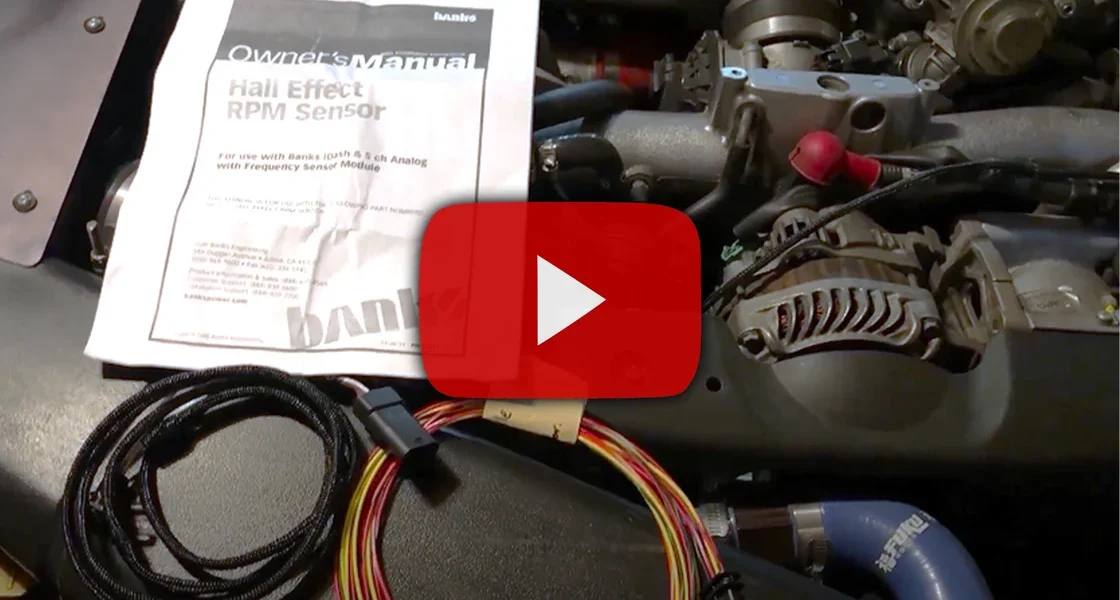iDash and Modules on Subaru
Running the iDash DataMonster in his 2006 Subaru WRX along with Banks Analog Sensor Modules, this Subaru enthusiast demonstrates just how versatile the iDash really is.

Since he’s running the iDash in stand-alone mode on his project vehicle, he will not see an RPM signal, which is not ideal when looking at recorded datalogs or playback on the iDash itself. The video goes over the two options: the Hall Effect Speed Sensor, available from Banks, and attempting to splice into a signal wire on an existing sensor. His choice was to go with splicing, using his existing Banks Sensor Module with Frequency, his iDash DataMonster, and the Frequency Input Pigtail. With a little guidance from Banks, the data was exactly what he wanted.

The Subaru enthusiast did an earlier video explaining why he went with Banks. His 2006 WRX is pre-CAN. CAN is an acronym for Controller Area Network and is how the ECU communicates with its sensors and modules. CAN became standard in all vehicles in 2008. Since his car does not have CAN, there’s very little data available on the OBD port. That’s where the iDash and Sensor Modules come in. By using the Banks sensors and his iDash he was able to set things up to see battery voltage, engine oil temperature, oil pressure, ambient air temperature, ambient air density, and coolant temperature. Since that earlier video, he has added the ability to keep an eye on the efficiency of his forced induction system by monitoring his turbocharger’s compressor outlet pressure, as well as the Intercooler’s outlet temperature and outlet air density.
He now has a robust stream of data that not only reveals the car’s vitals but also allows him to measure gains and losses when he makes changes to the engine.


